FORESTS: OUR LIFELINE for Class 7 SCIENCE
INTRODUCTION
Iss chapter mein hum janege ki forest kya hote hai, kaise yeh organisms ko habitat provide karte hai, canopy kya hota hai, crown kya hota hai, etc. Humus, decomposers, food chain ke baare mein bhi hum issi chapter mein padhenge. Yaha hum janege ki deforestation kya hota hai, iske kya- kya harmful effects hote hai; afforestation kya hota hai, iske kya-kya benefits hote hai. Forests hamare liye kaise useful hai, yeh hamare environment ke liye kaise lungs ki tarah act karte hai. Iss chapter ko padhne ke baad hamein forest ke sabhi benefits pata chal jayenge aur hum ye bhi samajh jayenge ki yeh hamare liye kitne important hai.
What is a forest?
Forest aisi land ka part ya area hai jo trees aur wide variety of plants se covered hoti hai. Forest bhi ek ecosystem ka example hai. Isme biotic aur abiotic factors dono include hote hai. Earth par different type ke forests present hai jinke different geographical aur climatic conditions hote hai. Forests hamare aur nature dono ke liye hi bahut important resource hote hai.
Forests bahut saari plant species ke liye home ki tarah act karta hai kyonki yaha different type ke trees jaise neem, teak, sheesham, sagwan, etc. paaye jate hai. Different type ke trees ke sath sath yaha par herbs, shrubs, creepers, climbers, grass, etc. sab present hote hai. Yeh plants humans aur environment dono ke liye hi beneficial hote hai. Forests ko koi grow nahi karta, inme koi plants nahi lagata, yeh khud hi grow karna start kar dete hai. Yaha par plants ke liye itni favourable conditions hoti hai ki woh khud hi grow karne lagte hai.
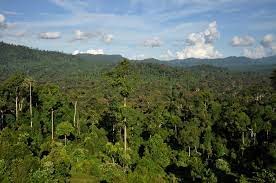
What is a crown?
Ek tree ka stem ke upar ka branchy part crown kehlata hai. Crown different shapes aur sizes ke ho sakte hai.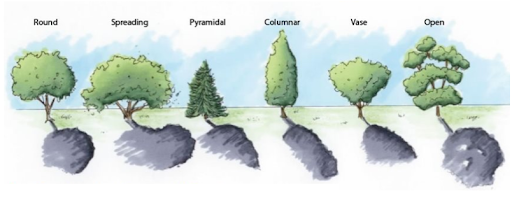
What is canopy?
Forest mein bahut saare trees ek sath grow karte hai, tall ho jate hai aur forest ki roof ki tarah appear hote hai, inme se sky bhi appear nahi hota. Isko hi hum canopy kehte hai.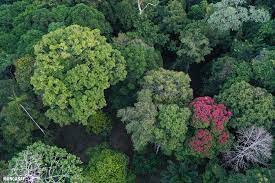
Stratification in Forests
Different plants ki different heights hoti hai, jiski wajah se natural habitat several layers mein divided hota hai. Isse animals mein survival ke liye competition bhi kum ho jata hai aur woh easily survive kar pate hai. The number of layers a forest has depends upon the climate, temperature, availability of light, type of soils and rainfall. Generally, the trees of a forest are divided into following sections:

Forests are a habitat of many kinds of animals
Forests variety of wild animals, insects aur microorganisms ko favourable environmental conditions, food aur shelter provide karte hai. Forests mein trees shelter ki tarah act karte hai, plants aur animals unke food ki tarah act karte hai. Forest plants ki tarah bahut saare insects, microorganisms, etc. ke liye bhi home ki tarah act karta hai. Forest ki soil highly fertile hoti hai isliye yeh inn organisms ke liye favourable living conditions provide karta hai.
Complex biodiversity ke presence ki wajah se forest food chains ko bhi support karta hai. Earth par different organisms present hai aur woh food ke liye ek doosre par depend hai. Eg- Herbivores plants ko khate hai, carnivores herbivores ko khate hai.
Organisms ki ek aisi chain jisme woh food ke liye ek doosre par depend karte hai, usko food chain kehte hai.

What is humus?
Yeh ek dark coloured substance hota hai jo soil mein paya jata hai. Humus dead aur decaying organisms se banti hai. Microorganisms decaying matter par rehti hai aur usko humus mein convert karti hai.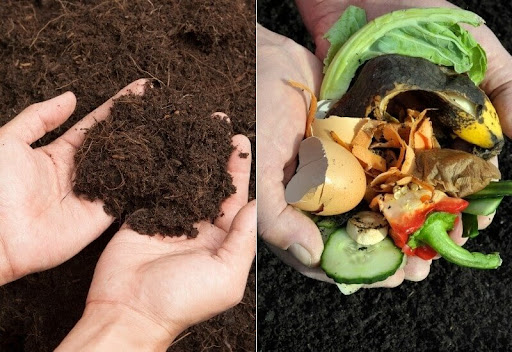
Who are decomposers?
Aise animals jo dead aur decaying plants aur animals par feed karte hai aur unko humus mein convert karte hai unko decomposers kehte hai.
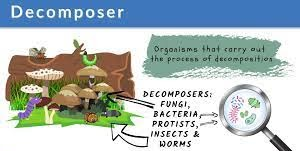
How nutrients are recycled in the forest?
Plants, insects aur microorganisms soil mein present nutrients ko use karte hai aur jab woh die hote hai toh decomposers unko organic matter mein convert karte hai. Iski wajah se forest ki soil fertile rehti hai aur nutrients recycle hote rehte hai.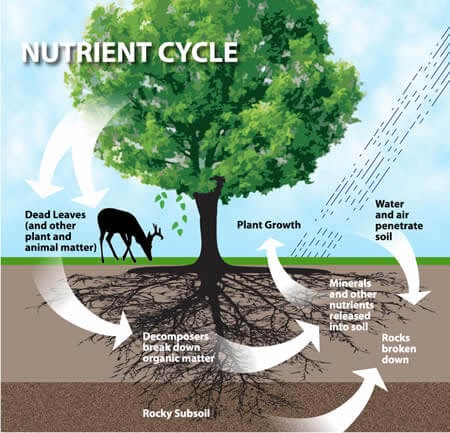
Why forests are called green lungs?
Forests mein bahut saare plants present hote hai aur hum jante hai ki plants carbon dioxide ko consume karte hai aur oxygen release karte hai toh forests mein animals jo carbon dioxide release karte hai plants unko consume karte hai aur unko oxygen provide karte hai. Isliye forests ko green lungs kaha jata hai. Aur iss tarah se atmosphere mein gases ka balance maintained rehta hai.Do people live in the forest?
Log forests mein bhi rehte hai kyonki yaha unko food, water, shelter, medicines, etc. sab milta hai.

Why forests are called dynamic living entity?
Forests mein sabhi living organisms ek doosre ke survival ke liye ek doosre ki help karte hai. Eg- Herbivores apne food ke liye plants par depend karte hai, carnivores apne food ke liye herbivores par depend karte hai, etc.The decomposers decay the dead matter in the forest and support the growth of plants. Hence forests are called Dynamic Living Entity.
How forests prevent floods and soil erosion?
Forest ek natural absorber ki tarah act karta hai aur rainwater ko earth mein seep karne ke liye allow karta hai, issi ki wajah se forests ke aas-paas ke area mein water table high hota hai. Forests water flow ko control karte hai aur floods aane se rokte hai kyonki tree rainwater ko directly flow karne se prevent karta hai.
Plants ki roots bhi soil ko bind karke rakhti hai aur isliye jab heavy rainfall hota hai toh soil water ke sath flow nahi kar jati. Iss tarah se forest soil erosion ko prevent karte hai.
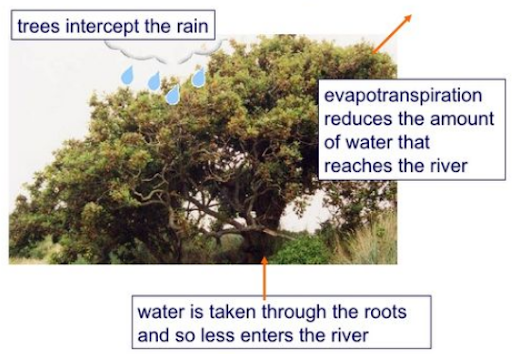
Forests mein bahut saare plants present hote hai isliye forests, rich source of oxygen hote hai. Forest ke aas-paas ki air bhi bahut fresh aur clean hoti hai, yaha ka climate cool hota hai aur yaha good amount of rainfall hota hai. Yeh strong winds ya dust storm ko area mein flow karne se rokte hai.
Forests loud sounds ko bhi absorb kar lete hai isliye yeh forest ke around noise pollution ko bhi prevent karte hai.
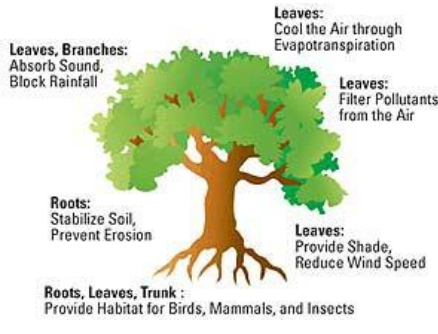
How forests preserve the water cycle?
Hum jante hai ki plants transpiration ki process se apna excess water remove karte hai. Iss process mein water, water vapours ki form mein atmosphere mein release hote hai isliye forest atmosphere mein water content increase karte hai. Yeh water hi condense ho kar clouds form karte hai jiski wajah se uss area mein rainfall increase hota hai. Yeh rainwater fir ground mein seep in ho jata hai aur underground water level ko increase karta hai. Iss tarah se forests water cycle ko preserve karte hai.What is afforestation?
Ek aisa process jisme hum unproductive areas mein trees plant karte hai jisse earth par forests increase ho, usko afforestation kehte hai. Afforestation earth ke environment ko better karne mein hamari help karta hai aur isse hamein aur bhi bahut saare benefits milte hai.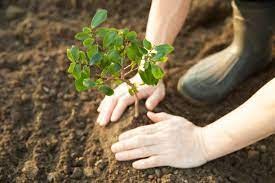
What is deforestation?
Forests ki large scale par purposeful cleaning ko deforestation kehte hai. Population increase ki wajah se humans ko habitat ki jyada jarurat hai jiske liye woh forests ko clean karte hai. Lekin deforestation ki wajah se bahut harmful effects hote hai.
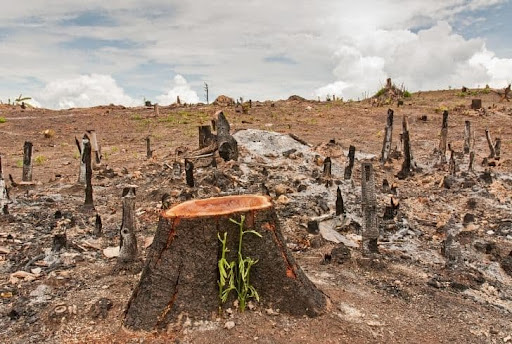
POINT 1
Crown: Branchy part of a tree above the stem is known as Crown.
Canopy: The uppermost branches of the trees in a forest, forming a more or less continuous layer of foliage is called canopy.
Decomposers: The micro-organisms which convert the dead plants and animals to humus are known as decomposers.
Humus: The organic component of soil, formed by the decomposition of leaves and other plant material by soil microorganisms.
Deforestation: Action of clearing a wide area of trees is called Deforestation.
Seed dispersal: Seed dispersal is the movement, spread or transport of seeds away from the parent plant.
Understory: A layer of vegetation beneath the main canopy of a forest.
Soil erosion: Soil erosion is the natural process in which the topsoil of a field is carried away by physical sources such as wind and water.
Regeneration: Regeneration is defined as the renewal of a forest crop by natural or artificial means.
SUMMARY
1. We get various products from the forests surrounding us.
2. Forest is a system comprising various plants, animals and micro-organisms.
3. In a forest, trees form the uppermost layer, followed by shrubs. The herbs form the lowest layer of vegetation.
4. Different layers of vegetation provide food and shelter for animals, birds and insects.
5. The various components of the forest are interdependent on one another.
6. The forest keeps on growing and changing, and can regenerate.
7. In the forest, there is interaction between soil, water, air and living organisms.
8. Forests protect the soil from erosion. n Soil helps forests to grow and regenerate.
9. Forests are the lifeline for the forest-dwelling communities.
10. Forests influence climate, water cycle and air quality.